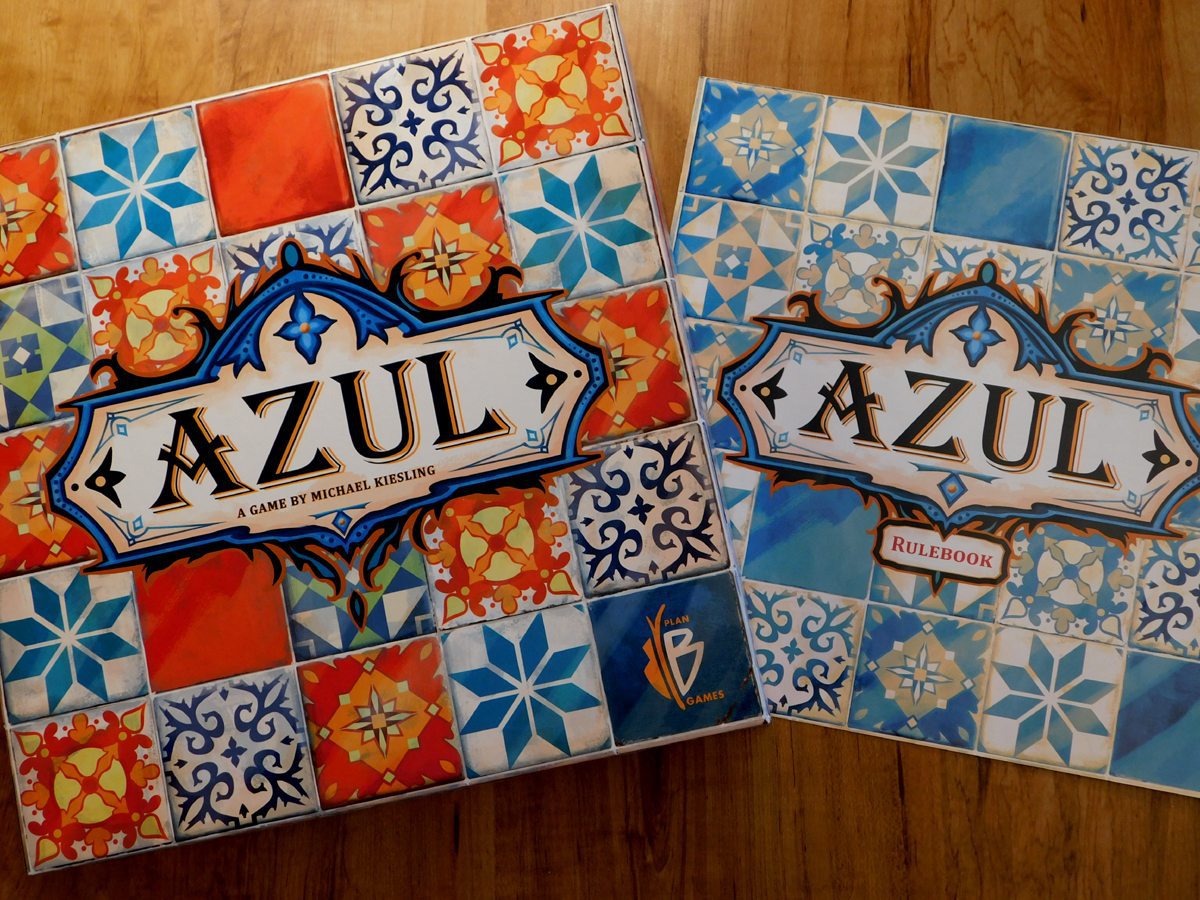
They say not to bury your lead, so let’s start by saying this: Azul is good. Really, really good. It arrived without much fanfare in late 2016 and promptly sold out of every retailer, both online and brick-and-mortar. In the time since that first print run sold out, it has gone on to win numerous awards including, most recently, the prestigious Cannes Game of the Year award.
Azul at a Glance
When I was young, most of the truly strategic gaming options available to me were abstract. If I wanted something that wasn’t Monopoly or Sorry or Life, then it was a game with oddly-shaped wooden pieces on a minimalistic wooden board. These games—Quarto, Abalone, Chess—were where I cut my teeth and learned what games could truly be. But as the years have gone by the notion of abstract gaming has been buried beneath large boxes packed with plastic, games about zombies and space marines and global domination. People grew disinterested in playing games that involved pieces and boards that looked like nothing and told no story.
And then, sometime in the last few years, publishers realized that they could take an abstract game, add a theme, make it beautiful, and people would flock to it. Games like Santorini and Century Spice Road exploded on the marketplace, despite loosely-hung themes on truly abstract concepts.
In Azul ($39.99), 2-4 players take on the roles of decorators of the royal palace of Evora in Portugal. Really, though, Azul isn’t about tiling the palace walls. It’s a game of timing and resource optimization: who can get the right tiles at the right time while forcing your opponent to claim the wrong tiles? At a 30- to 45-minute play time, Azul is every bit the brain-burner as games that look twice as complex, cost three times as much, and take four times as long to play.
The Components of Azul
I’ve heard a small but vocal minority of critics claim that Azul has “tricked” people into liking it by providing exquisite component-quality and beauty. Admittedly, a beautiful game will turn more heads than a plain one, but why not give people something that they want to like the moment they open the box?
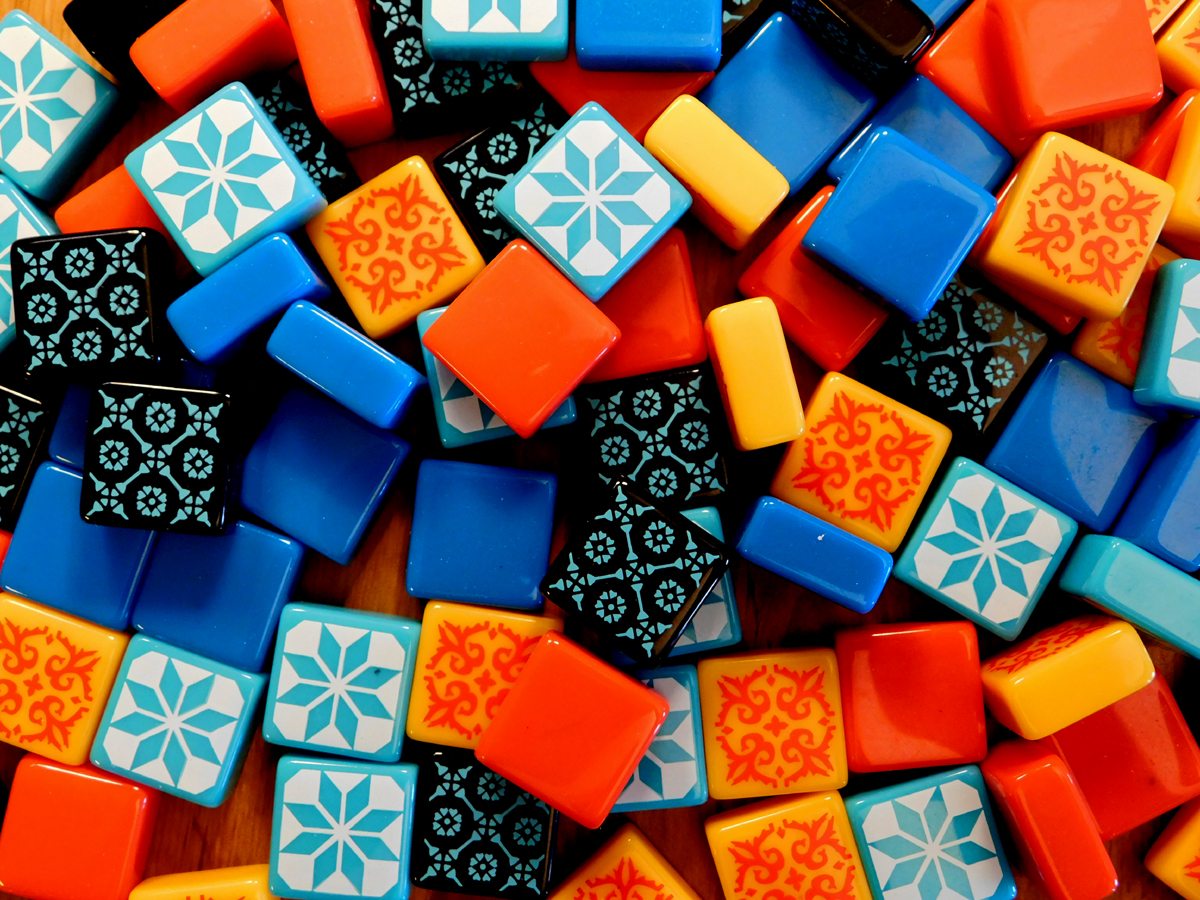
The art in Azul is intricate and mesmerizing, but better yet are the heavy, plastic tiles that you will be grabbing in handfuls at the start of each round of play. The tactile aspect of board games is one that even many of the best publishers often overlook, considering it unimportant and secondary. But what the very best publishers know is this: the first battle you have to win comes before the game is ever played by convincing players that this is the game that should be brought to the table tonight.
Azul contains:
- 9 Factory displays
- 100 Tiles (20 each in 5 different colors)
- 1st Player token (note: in newer printings, this is replaced with a 1st player tile)
- 4 Double-sided player boards
- 4 Point tracker cubes
- 1 Cloth tile bag
- 1 Rulebook
And that’s it. There are only a few different types of items in this box, which actually adds to its appeal. It’s so bright, so beautiful, and so un-intimidating that it’s hard not to bring this one along to each and every game night. Playing the game is slightly more complex, but getting people to agree to play is a cinch.
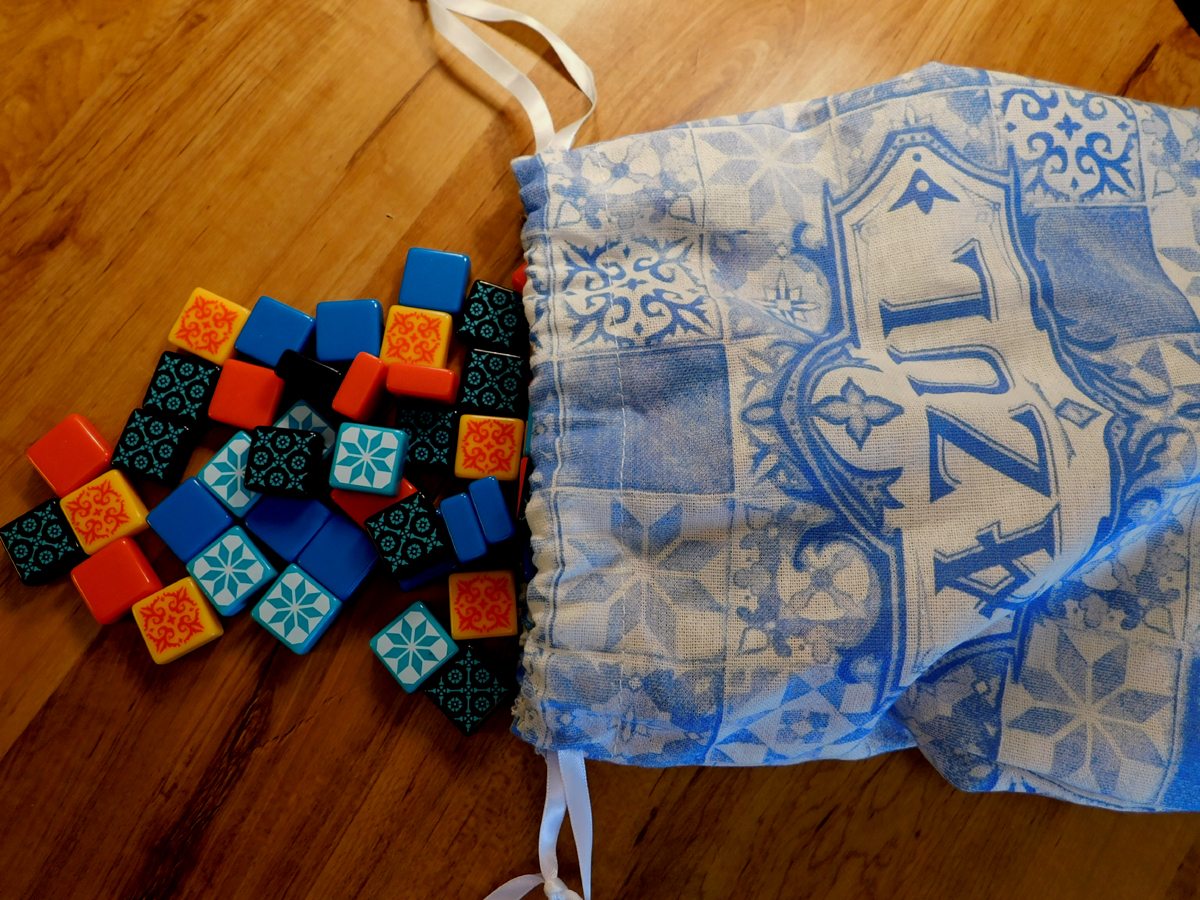
How to Play Azul
The goal of Azul is to score the most points by laying your tiles in a specific sequence. Interestingly, the game isn’t what I was expecting when I first played it. From pictures and vague summaries, it looked like a pattern-making game similar to Qwirkle. In fact, you have fairly limited choices in terms of where to place your tiles. The strategy comes instead from when you place your tiles in specific locations and how you select tiles.
Setup
Each player receives a board (all of which are identical) and a token to track their points. Then, depending on the number of players, 5-9 factory displays are laid in the middle of the playing area. All the tiles are put into the tile bag, shaken, and then randomly drawn until 4 tiles have been placed on each factory. Finally, the player who most recently visited Portugal receives the first player token (or you can choose randomly) and you’re ready to go.
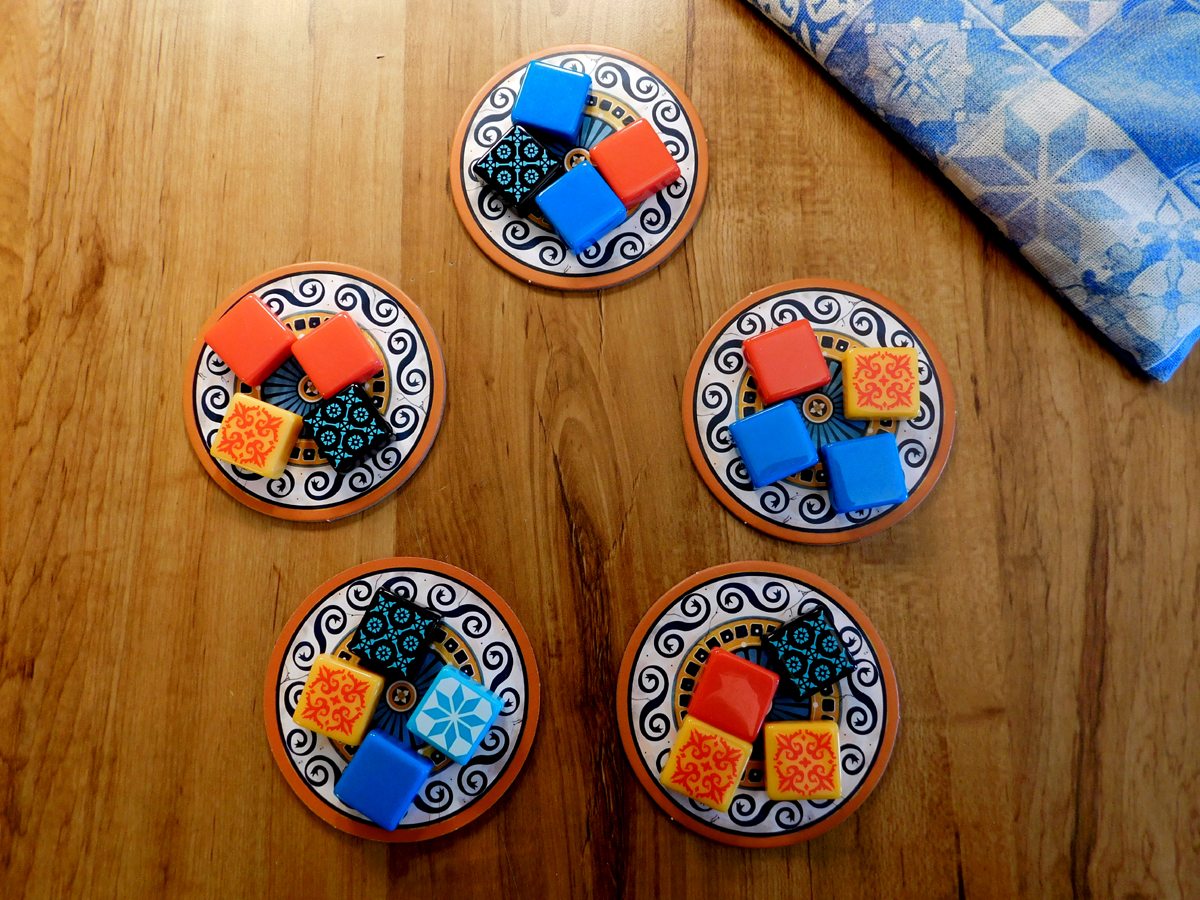
Claiming Tiles
On your turn, you typically have 2 choices. First and foremost, you can choose a factory and take all the tiles of a given color from that factory to be added to your wall. Any remaining tiles from that factory are immediately placed into the center of the table between the factories. This is your market, which is slightly less reputable than the factories, but can still be used to source tiles.
Your second option is to take all of any color of tile out of the market. If you’re the first player, you don’t have this option and you must place your 1st player marker into the market after you make your first factory selection. Whichever player first takes tiles from the market that round also claims the 1st player marker and will select first next round.

You will alternate back and forth selecting groups of tiles from the factories and the market until all of them have been taken, which will signify the end of the round and move you into scoring. Before we get there, though, let’s talk about placement.
Placing Tiles
Your player board, apart from the scoring track at the top, has two important areas. On the right side is your palace wall, which is a sudoku-like 5×5 grid in which each color is represented, but never repeated, in each row and column. This is the palace wall you are attempting to cover. However, you don’t simply claim tiles and place them on the wall. Instead, you need to collect a certain number of each tile before you can place one of them on your wall.
On the left side of the board are your storage rows where tiles can go, lining up with the rows of your palace wall. To place a given tile on your wall, you must first fill the corresponding row on the left with that color. At the top of your wall (least seen by the visitors to the palace) you can get away with some shoddy work, and only need a single tile claimed to place it on the wall. Each subsequent row lower, though, requires more detail until you reach the bottom row where you must collect 5 tiles of the same color before you can place a tile of that color in the lowest row on the wall.

Here’s the rub, though. When you select tiles from the factories or the market, you have some restrictions. You can’t split those tiles between rows: if you take 3 red tiles, you have to place all 3 in the same left-side row. If you take tiles you can’t use, don’t want to use, or can’t use all of, then those (or at least the ones you can’t use) are considered broken and placed on a track at the bottom of your board that will give you negative points at the end of the round. So while, at first, it seems like you have a world of options, you quickly realize that if you’re not careful and don’t plan ahead, you’ll end up losing more points than you gain by clumsily breaking too many tiles.
And, if you’re not scoring enough, that can cost you the game.
Scoring
In my experience, this is the part of the game that is the hardest to grasp, but I’ll keep it simple for the time being.
After every tile has been claimed from the table, the placement and scoring begins. Players move from the top of their board down, checking their collected tiles to see if they’ve filled that particular row. If they have, then they take one of those tiles to place on the corresponding color of the corresponding row of your wall, and the rest get discarded, clearing that row out to collect a different color in the next round(s).
You score points each time you place a new tile on your wall, earning points not just for the tile you lay but also earning extra points for runs of tiles bordering the one you just placed. Throw down a lonely red tile that touches nothing and you get a single point, but plop it into an open spot with the 3 spots below it filled and another tile on either side and suddenly that placement earns you 7 points! (Note: when earning points for contiguous tiles in both row and column, you count the central tile twice).

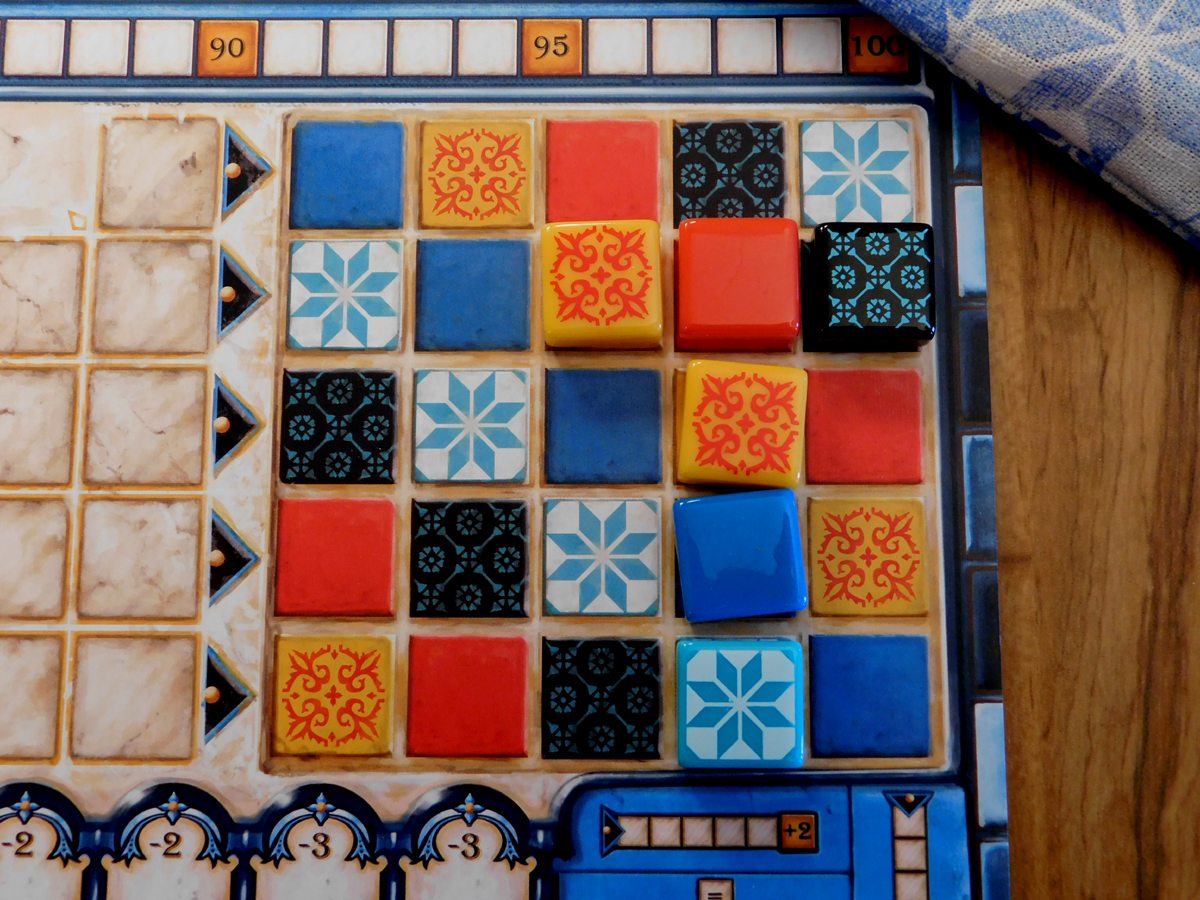
For end-of-round scoring, it doesn’t matter if the tiles are high on the wall and easy to play or if they’re low down and took you ages to collect enough tiles for. All that matters is their relationship to each other, so you find yourself straining to look farther and farther ahead to set yourself up for each simple placement to build on the last and earn you exponentially-increasing points.
Lastly, there’s the end of game scoring, which awards a 2-point bonus for each horizontal row of your wall completed, a 7-point bonus for each completed column, and a whopping 10-point bonus for each color that you’ve tiled all 5 instances of on your wall. And, in a game that can often be neck-and-neck, these scoring kickers can often be the difference when all is said and done.
End of Game
Azul continues until one player completes a horizontal row on their wall. That scoring round is completed, and then end-of-game kickers are scored, and then the game is over. This means that you have a very evident clock as the game progresses. You not only can cause the game to end yourself (something you might sprint towards if you find yourself with a mid-game lead) but also when other players may have the opportunity to end the game (which, if you’re lagging, you might try to prevent by taking the tiles they need to complete a row).
What Makes Azul So Good?
You may be wondering, at this point, where the strategy comes in. Sure, you have a solid puzzle in terms of claiming tiles in the right orders and quantities to maximize your points when you place them, but that alone doesn’t seem like much of a basis for an award-winning game that was impossible to buy for months after its initial release. And you’d be right.
The true pith of Azul plays out in the middle of the table, where your tiles populate your factories and gradually slide into the market. Here is where you will find yourself staring with a furious intensity as you try to maximize not just your scoring, but both your and your opponent’s breakage.
The tile-breaking mechanic seems like a throwaway rule at first, but without it, the game would barely function. It’s the check-and-balance that keeps you from greedily grabbing up every giant handful of tiles you can. And it’s the system that, if you play your cards right (metaphorically, of course), will allow you to smack another player for giant swaths of negative points by forcing them to take tiles they can’t play.
As the tiles dwindle in the middle of the table you suddenly find your decisions far more complicated than they were earlier in the round, because you can see the end in the sight. You now have to calculate who will have the final turn, and therefore be forced to take whatever color of tile remains. And this isn’t always straightforward, because you can prolong the number of turns left depending on whether you take from factories or the market, and also depending on what’s left in each! And lastly, you have to be sure that you’re not compromising your own collection of tiles too much as you seek to manipulate someone else’s.
If all that seemed really complicated, it’s because it feels complicated. You reach a point during Azul where, if you’ve been paying attention, all the different bits of information you have to consider snap sharply into focus and you catch your breath, your brain grinding to a halt as you are instantly overwhelmed by the sheer magnitude of your prospects. Which isn’t to say Azul is complex. The rules are straightforward and the game can be learned in minutes. But, like the best of games, the complexity comes from the choices you have to make, and the choices in Azul are excruciating in the best possible way.
If that makes it sound combative, then I apologize. Much like another of my favorite abstract strategy games, Patchwork, you can choose to play very inwardly-focused, and will derive lots of enjoyment from the puzzle-y nature of the game. But, like Patchwork, the game gives you the option to think about it on another plane, and it’s that plane, that challenge, that next level of analysis that elevates Azul from good game to great.
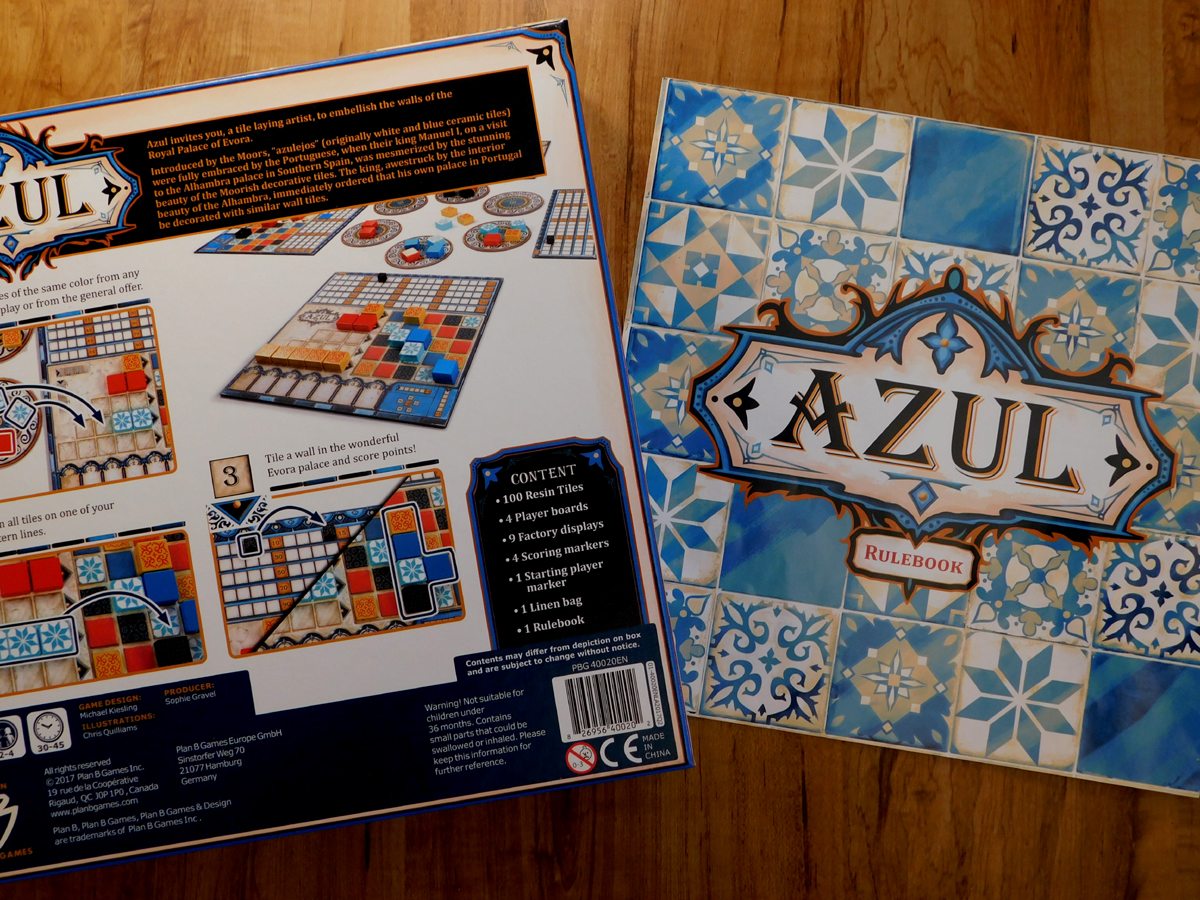
Should I Buy Azul?
No game is all things to all people, but Azul is about as close as they come. Good for players both experienced and casual alike, this is the game to buy for your significant other to try to get them into the hobby. The game to buy that family member who always brings out checkers even though everyone else is sick of it. The game to bring out at school to make new friends in the cafeteria.
Azul has the ability to appeal to people of a wide range of ages and interests and experience, and that is one of the reasons it has become such a runaway hit.
Click here to see all our tabletop game reviews.
If you’d like to stay up-to-date with all of our tabletop gaming coverage, please copy this link and add it to your RSS reader.
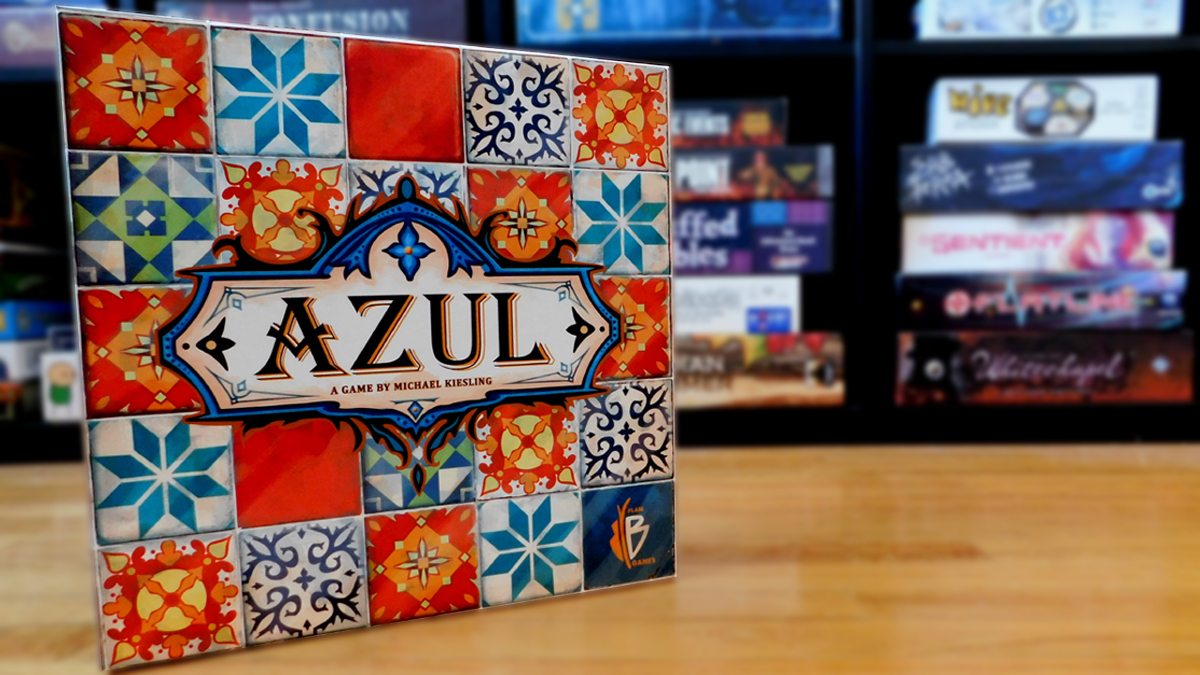



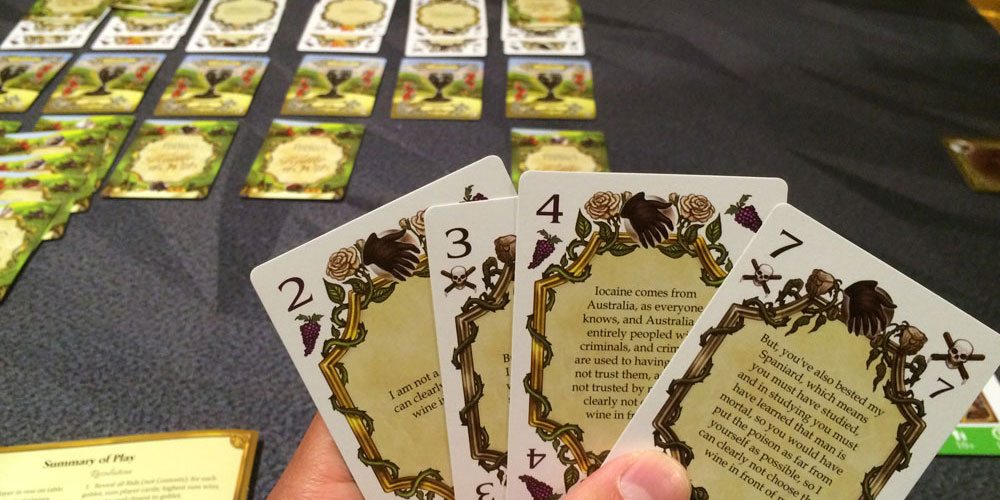

Recently Lowes entered into Lowes in to home improvement market. Now all their employees can make use MyLowes Life portal to get all benifits.
I am a regular customer for lowes, homedepot, Menards home improvement stores. Menards is giving the best portal for its employees to adjust working holidays, paystubs, etc.
If you want to avoid a clogged toilet, just remember this simple phrase:”Don’t use your toilet like a garbage can”. It’s not meant for band aids, kitty litter, or anything else besides it’s intended use. For more information about home decorating ideas click here.